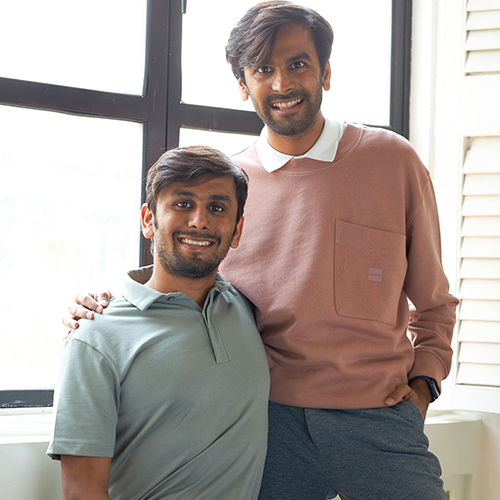
Dhruv Toshniwal
Co-Founder & CEO
Brand - The Pant Project
We are a minimal-waste brand
The Pant Project is known for its custom-made bottom wear. Its products are ‘Made in India’ and stitched to perfection in state-of-the-art modern facilities by experienced craftsmen who are empowered with cutting-edge technology. In an interview with Fibre2Fashion, The Pant Project Co-founder & CEO Dhruv Toshniwal reveals the challenges faced while initiating their venture and walks us through the design process of custom-tailored pieces.
Fibre2Fashion: What attracted you to start custom made tailoring brand and how would you illustrate your journey so far?
Dhruv Toshniwal:
My family has been in the apparel industry for the past 45 years. I grew up around textiles, and when I returned to India after my education in the United States, I felt there was a gap in the market for digital native brands. I also struggled to find pants that fit me well since I am an in-between waist size and have large thighs because I play a lot of sports. So, I started The Pant Project, which offers custom-made pants for men and women. We launched in October 2020, right in the middle of the pandemic, and we have been surprised at our own growth journey. We have now served over 25,000 pants to customers across India and are excited to continue to build our range of offerings.
F2F: How do you strike a balance between work and personal life, especially with your sibling also being a co-founder? What were the challenges faced?
DT:
My brother Udit and I (Dhruv) are two completely different people, who complement each other strongly. Udit is the creatively motivated brain that guides our marketing and product development and I come with a background in business development and finance. While our division of roles is clear, we share a common vision for the brand and are both uncompromising in the standards that we expect from our team, and for our customers. More than internal challenges, we have faced many challenges in the macro-situation, particularly with launching of the brand through COVID-19. We have been together in our journey as brothers who are looking to disrupt the fashion industry.
F2F: What were the difficulties faced initially since the concept of custom tailoring is unique and new in India?
DT:
I would argue that India has been accustomed to tailored clothing for a long time now. Many of our fathers and uncles would only visit tailors with fabrics to sew up a pair of pants for their office wear or casual wear. What’s new is the digital angle to custom-tailoring, and we hope to lead this shift towards shopping from the comfort of your home. What’s also new is the level of technology that we are using in our production processes – autocad generated custom-patterns depending on each client’s body shape, laser cutting of fabrics for precision, and sophisticated tech-enabled quality control. We are proud to be bringing back the concept of custom-tailoring and to be making high quality garments in India.
F2F: How do you manage to curate such sleek and comfortable designs? How does the manufacturing process undergo?
DT:
Our colours and styles are curated by our designers and researchers that are based out of Europe and stay up to date with the latest trends and styles in the market. When an order is received, our factory receives an update with all the measurements and choice of pants. This then goes into production with our state-of-the-art equipment and expert tailors and technicians. The finished product is received by the client 10 days later. Our fit guarantee offers free alterations to our customers. We make sure each customer is completely satisfied with his or her purchase from The Pant Project.
F2F: How is your approach towards sustainability?
DT:
The Pant Project is a consciously committed brand. We are working towards being sustainable, and have several initiatives under our sustainability endeavours, which include using sustainable raw materials like polyester made from 100 per cent recycled from PET bottles, Livaeco viscose which is sustainably sourced under the canopy cover agreement, cruelty-free merino wool which can be traced to mulesing-free farms, 100 per cent natural linen from natural sources in Europe, and Better Cotton Initiative certified rich cotton.
F2F: How has digitalisation and social media impacted your brand? What are some of the nuances which you have learnt or bettered through the years?
DT:
Social media and digital channels have been the key lever for our growth. We have learned over time that less is more. When it comes to copy, elements or marketing concepts, it is always better to keep it simple and authentic. Our social media profile has grown from being product-driven to now being very people and experience driven. We are learning and growing every day.
F2F: Can you share some tips to keep one’s pants and denim safe and long lasting?
DT:
The best way to keep your pants safe and long-lasting is to follow the wash care instructions on your clothing. We research, experiment, and test out methods to make sure that we give you the correct wash-care instructions on the inside of your pants and denims.

Abhay Gupta
Gabi Seligsohn
Bill D’Arienzo
Pradip Mehta
Rahul Mehta
Anurag Batra
Rahul Mehta
Fanny Vermandel
Aseem Prakash
Arun Sirdeshmukh







_8.JPG)





